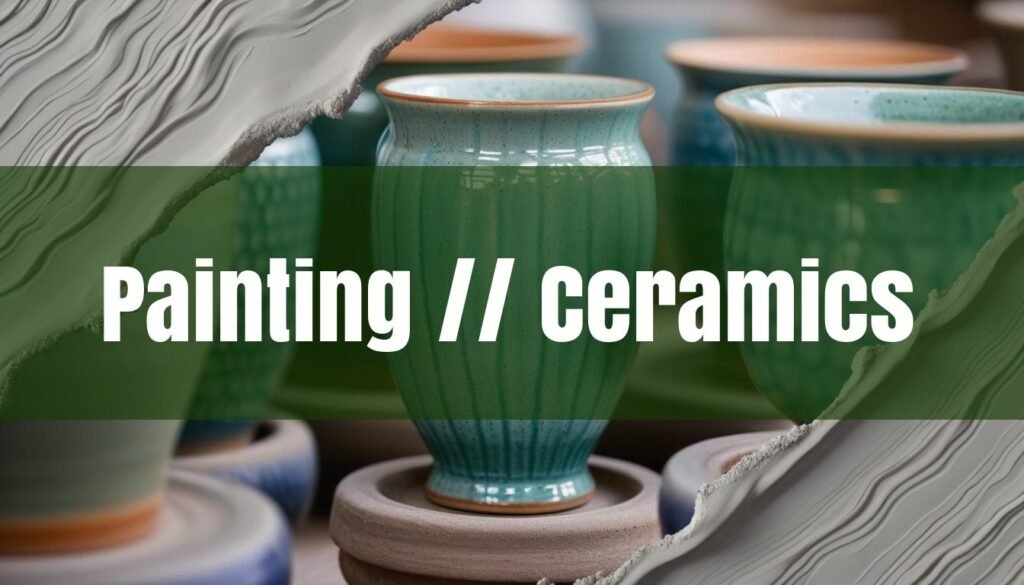Painting fired ceramics opens up a world of creative possibilities, allowing artists and hobbyists to add intricate designs and vibrant colors to their ceramic pieces. However, achieving a durable and visually appealing finish requires careful consideration of the types of paints used, proper surface preparation, application techniques, and effective sealing methods. This article explores the various paint options suitable for fired ceramics, offering practical advice to ensure your painted designs withstand the test of time.
Choosing the Right Paint for Your Ceramic Project
Selecting the appropriate paint is crucial for achieving the desired look and durability on fired ceramics. Several types of paints are well-suited for this purpose, each with its own unique properties and application techniques. Ceramic stains and underglazes are specifically designed for ceramics, offering excellent adhesion and vibrant colors. These paints require firing in a kiln to set the colors and create a permanent bond with the ceramic surface. For those seeking a more accessible option, acrylic paints are a versatile choice, particularly for unglazed pottery. Acrylics are chemical-based but generally non-toxic, boasting a natural elasticity that helps them remain intact over time, read more about using acrylic paints. Spray paint is another viable option, providing a smooth, even finish without brush strokes, suitable for both glazed and unglazed surfaces, and is also discussed in the linked article. Enamel paints, known for their durability and glossy texture, are oil-based and can withstand high temperatures when baked, making them ideal for glazed pottery, you can learn more here. Latex paint, a water-based option, offers a thinner consistency and requires multiple layers for a solid finish, drying quickly and available in various gloss options, you can read about latex paints here. Porcelain paint is an excellent choice for glazed ceramics, adhering better than acrylic and capable of being fired in a conventional oven to ensure a waterproof and washable finish, discover porcelain paints. Decola paints are also highly rated, known for their high-quality, pigment-dense formulas specifically designed for ceramics and glass, offering vibrant finishes and long-lasting results when baked, which you can read more about here.
Surface Preparation and Application Techniques
Proper surface preparation is essential to ensure optimal paint adhesion and longevity. For bisque-fired clay, which is porous, it is best if the paint soaks into the pores for better adhesion, read more about using acrylics on ceramics. Before painting, ensure the ceramic surface is clean and free of dust, oils, or contaminants. A clean sponge or lightly damp cloth can be used to remove any residue, see more tips on glazing. Holding the piece with a cotton knit cloth can prevent the transfer of oils from your hands onto the pot, here are some tips for painting bisque-fired clay with underglaze. For application, various techniques can be employed to achieve different effects. When painting bisque-fired clay with underglazes, work from more watered-down underglazes in the first layers to less watered-down underglazes in later layers to build depth, these techniques are discussed here. Overlapping some areas while leaving others with fewer layers is also important for creating depth, which you can read about here. The direction of brushstrokes should be considered for both style and blending purposes, and is discussed further here. Flat-tipped brushes are ideal for shading and geometric work, while small-flat tipped brushes are useful for intricate designs when using stencils, more information can be found here. Airbrushing is a technique that involves using a special tool to apply paint or glaze to the ceramic piece, allowing for precise application and effects like gradients or shading, you can read more here. You may also be interested in learning about underglaze tips, techniques, and mistakes to avoid. To add further depth and decoration to your pieces, you can also explore pottery carving techniques.
Sealing and Finishing for a Lasting Impression
Sealing painted fired ceramics is crucial for protecting the paint from scratches, UV damage, and moisture, as well as for enhancing the final appearance. Various sealants are available, each offering different levels of protection and finishes. Ceramic glaze provides a glossy finish and added durability, while dishwasher-safe Mod Podge is suitable for items intended to be washed in a dishwasher, this is discussed here. Acrylic sealer sprays offer a quick and easy sealing process, read about acrylic sealers here. Duncan spray and brush-on sealers are available in gloss and flat finishes, protecting the paint from chipping and smudging while providing the desired sheen, these are available in gloss and flat finishes, read about them here. Apply the chosen sealant in a well-ventilated area, using even strokes to cover the entire painted area, and follow the manufacturer’s instructions for drying times, follow the instructions here. Some sealants may require baking in an oven to cure, so be sure to read the instructions carefully, these instructions are available here. Over time, reapplication of the sealant may be necessary to maintain its protective layer, you can read about reapplication here. Ceramic brush-on sealers produce smooth, hard surfaces, brighten colors, and protect the finishes of objects decorated with nonfired color products, and are available here.





